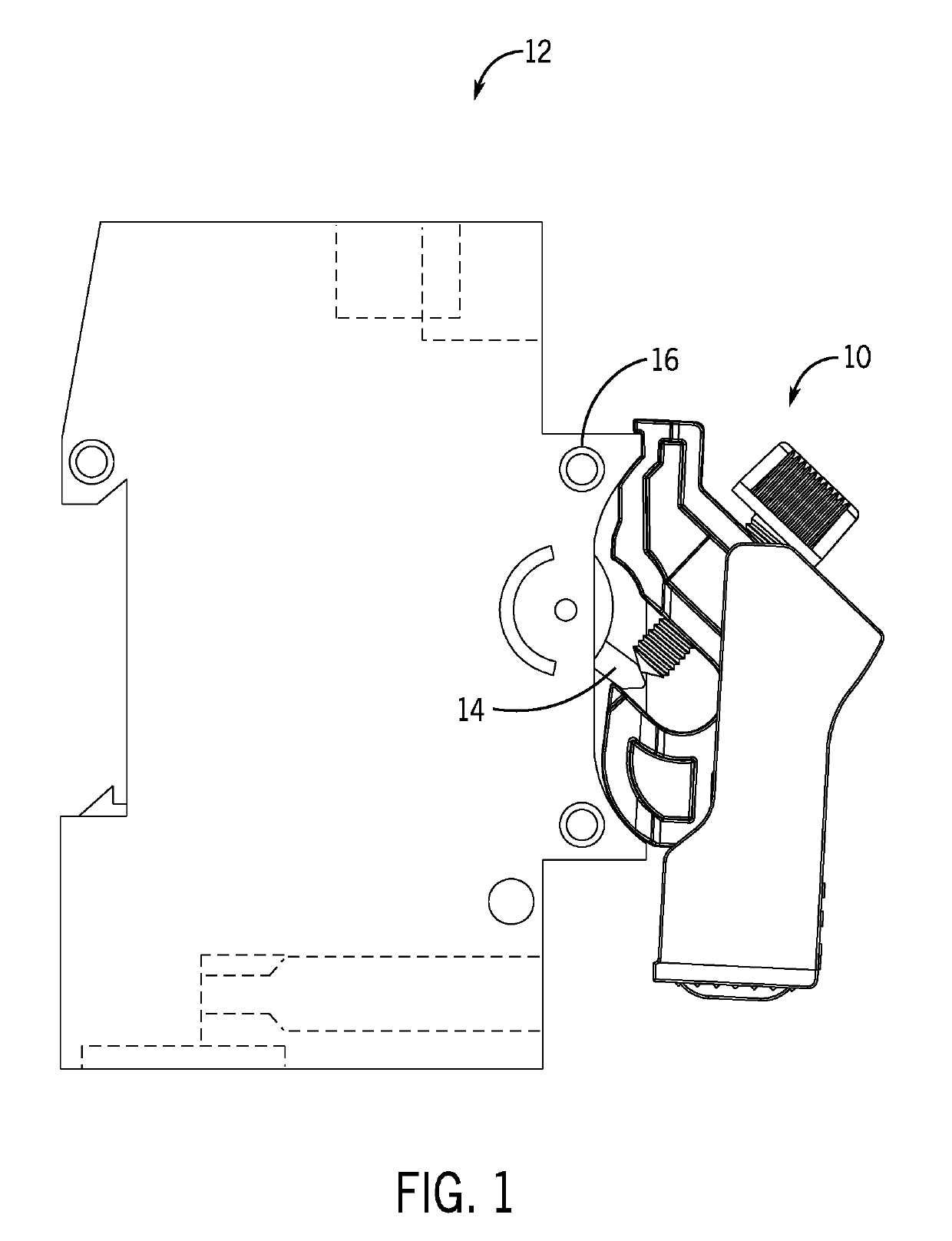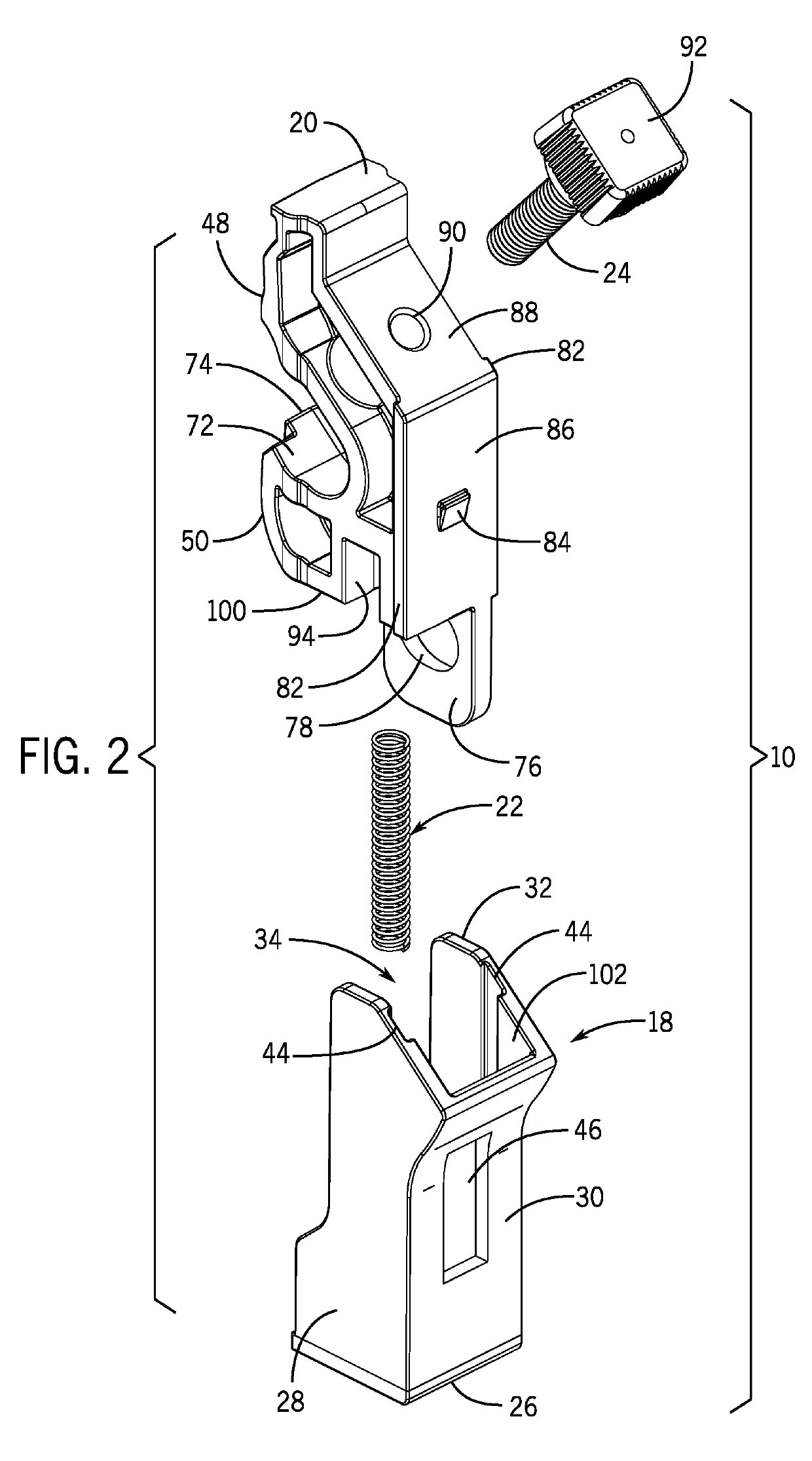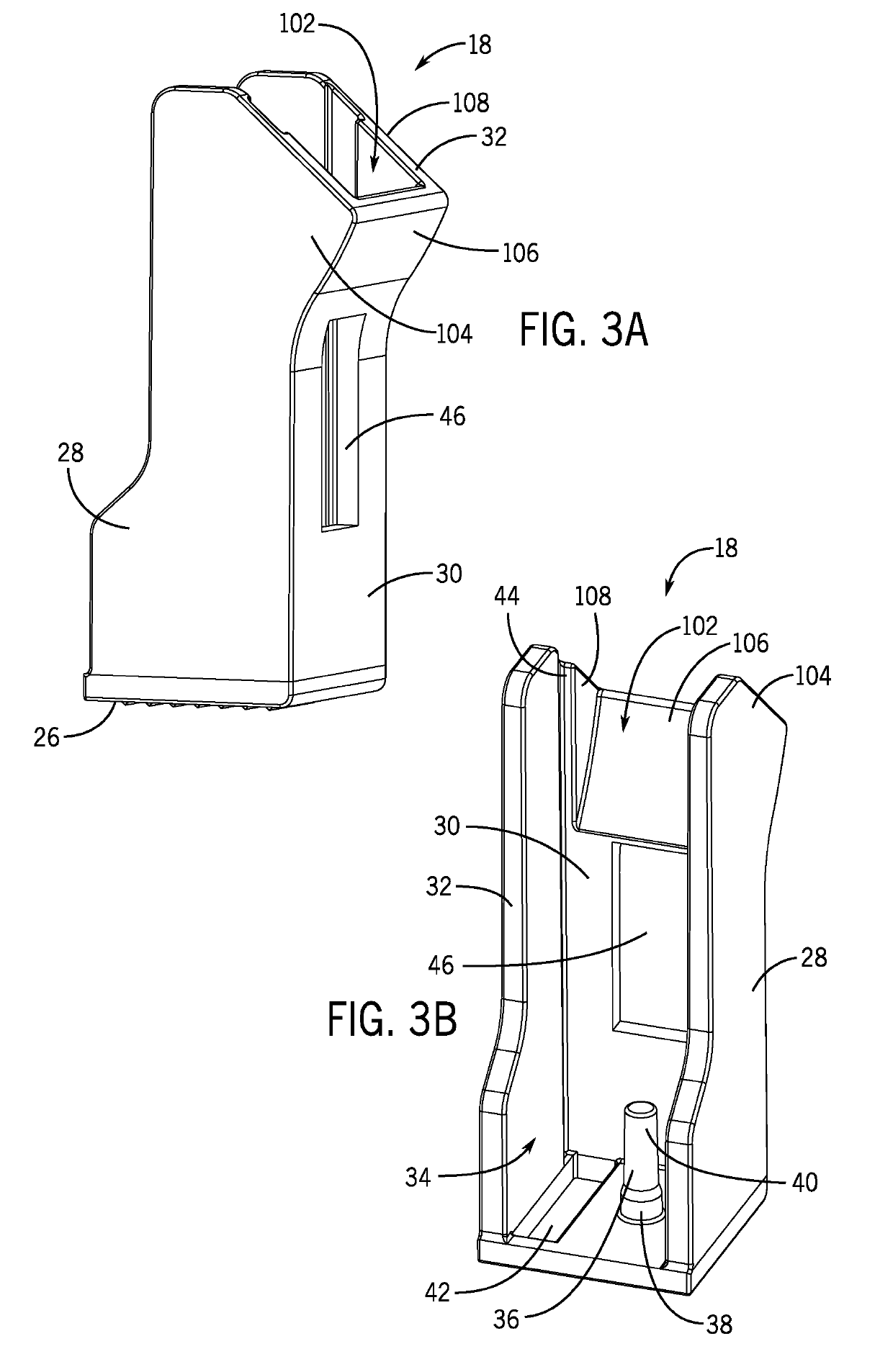Circuit Breaker Lockout Device
a circuit breaker and lockout device technology, applied in the direction of electric switches, basic electric elements, electric apparatus, etc., can solve the problems of circuit breaker lockout devices that cannot be readily removed from the circuit breaker, and the switch of the circuit breaker cannot be freely rotated, so as to achieve quick and easy coupling, greatly improve warehouse or factory efficiency, and facilitate uncoupling
- Summary
- Abstract
- Description
- Claims
- Application Information
AI Technical Summary
Benefits of technology
Problems solved by technology
Method used
Image
Examples
Embodiment Construction
[0023]Generally, the present disclosure provides devices and methods for locking out a circuit breaker. When installed, the lockout devices can be secured to the circuit breaker switch and can engage the circuit breaker body to prevent rotation of the circuit breaker switch relative to the circuit breaker body.
[0024]For purposes of clarity, the foregoing figures will be described using terms such as “rear,”“back,”“front,”“top,”“bottom,”“right,”“left,”“side,”“downward,”“upward,” or other types of directional language. The directional language used in the specification should not be considered limiting, as it is provided for descriptive purposes only. It should be understood that these terms are used within the specification only to promote understanding of the disclosure and refer only to the orientation of components shown in the provided figures. As will be appreciated by one of ordinary skill in the art, the lockout devices provided in the disclosure can be oriented in multiple or...
PUM
 Login to View More
Login to View More Abstract
Description
Claims
Application Information
 Login to View More
Login to View More - R&D
- Intellectual Property
- Life Sciences
- Materials
- Tech Scout
- Unparalleled Data Quality
- Higher Quality Content
- 60% Fewer Hallucinations
Browse by: Latest US Patents, China's latest patents, Technical Efficacy Thesaurus, Application Domain, Technology Topic, Popular Technical Reports.
© 2025 PatSnap. All rights reserved.Legal|Privacy policy|Modern Slavery Act Transparency Statement|Sitemap|About US| Contact US: help@patsnap.com



